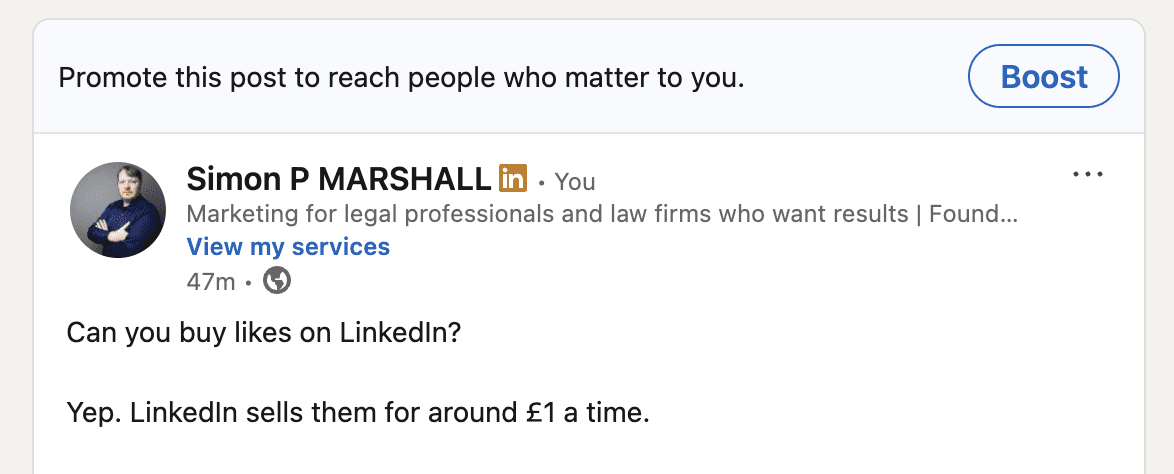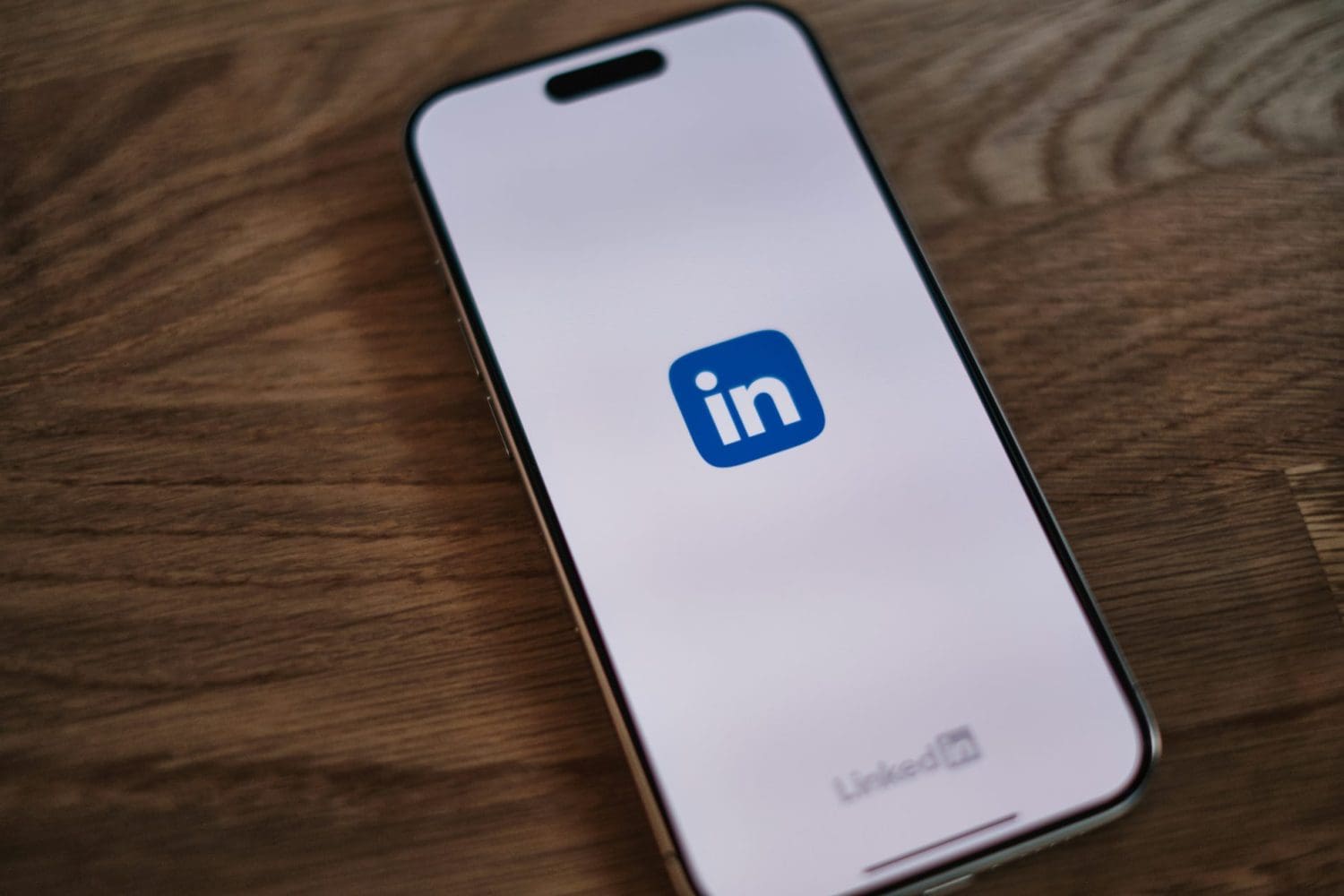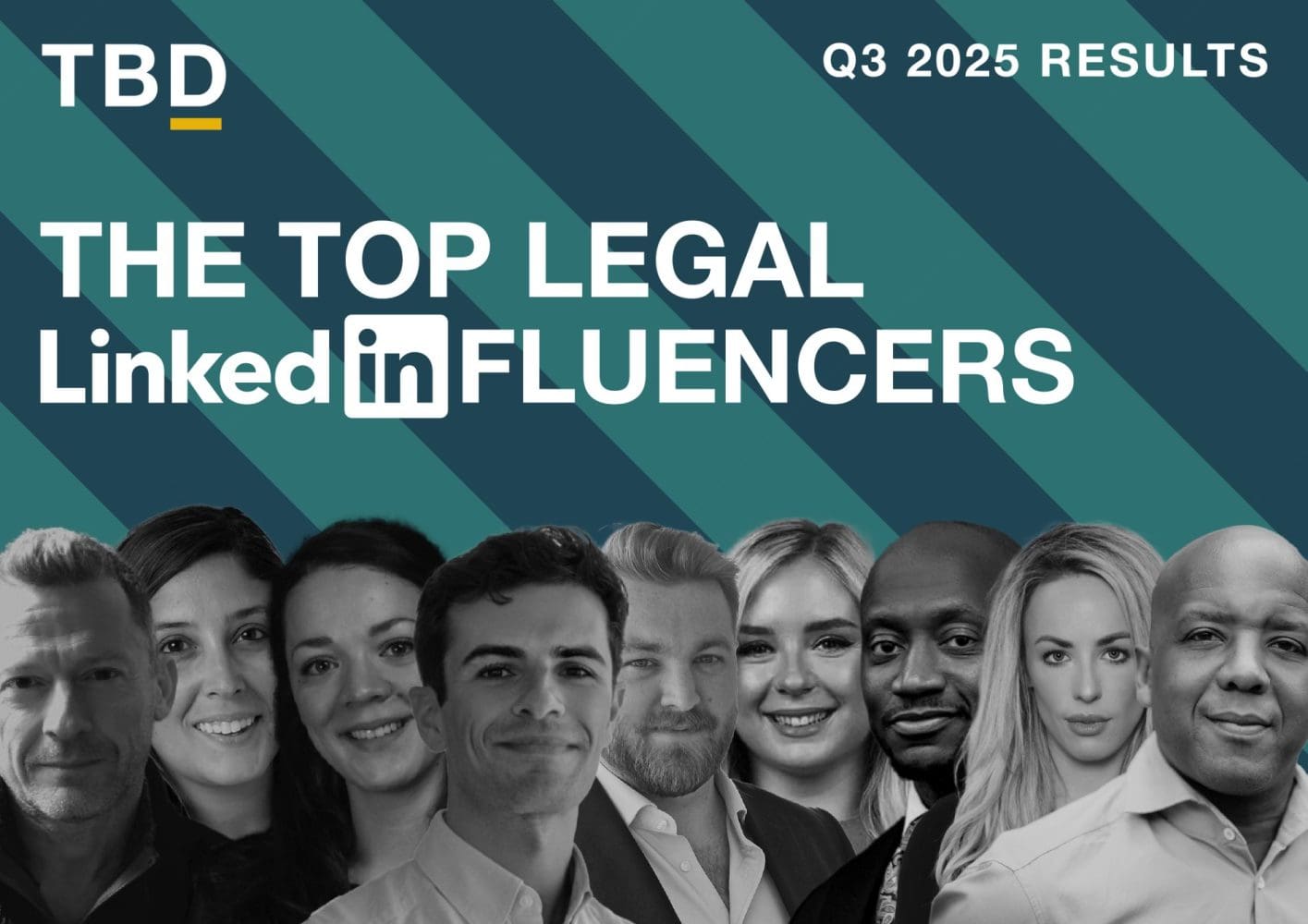Yes. LinkedIn sells them for around £1 a time.
It has a new option that allows you to Boost some of your personal posts (which has been available on Company Pages for some time now).
The level of organic (i.e. free) reach that your posts get seems to have dropped recently. It’s hard to say exactly without a major data set, but Richard van der Blom’s October 2025 update seems to confirm that this is the case.
What’s increasingly clear is that LinkedIn wants to monetise your feed.
As more and more people post on the platform (up 20%+ this year), the feed is going to get ever more crowded. So, how do you make sure that your content gets seen by your target audiences?
LinkedIn says: “Pay us, and we’ll show it to the right people”.
It’s called Boost and it’s now a button above every post I have written.
LinkedIn has simplified the advertising process so anyone can easily spend £8 a day (minimum) to promote their posts to the “right” people.
A few thoughts:
- Let the post do its organic work for 24 hours before boosting it – why pay for an impression that would otherwise be free?
- Define your audience and don’t let LinkedIn choose it for you. Maybe ask Chat-GPT – “Is my post aimed at this audience?” – that will improve your organic reach and make sure that any boosting is more likely to be shown to the right audience.
- Do not get fooled by the “audience size” metric. Your daily £8 is not going to have your post shown to 1,100,000 people. It’s going to get shown to a selection of them.
- Look instead to the clicks column and work out what you’re paying for.
- You have three outcomes choices: more visits to your website, more impressions, more engagement with your posts. That choice between communications and marketing is probably best explained in another post. But it’s worth knowing if you’re paying £6.82 for 1,000 impressions to the right audience, or if you’re being asked to pay £1.08 for a like or a comment.
- Engagements is now a broad term and includes likes, comments, saves, forwarding. So be careful about what you think you’re paying for.
When we train people on LinkedIn, we show them how to do a lot (if not all) of this with no ad spend: targeting the right audiences with the right messages at the right points in the buying journey, every time.
FAQs
Can any post be boosted?
No – it comes down to content type (so no events, for example) and content (so no rude words or offensive topics).
Is it worth boosting all my posts?
No. I used to work with someone who would boost all their company page posts from the outset – spending thousands of pounds a year to reach the same people that a well written organic post would reach. My view is that most posts aren’t worth boosting. But if the idea is new or you want to push a topic at an audience that’s quite hard to reach, then it might well be worth paying a few pounds to get to them.
Will those paid audiences engage with my boosted post?
My gut says Yes and No. I do think people will read them (because the advertising element of them is pretty unobtrusive). But I don’t think that they will get a lot of extra likes.
I also think that you might focus on the option which encourages your target audience to take action (visit your website) as that has clearly demonstrable benefits. You could combine that with some retargeting PPC, of course, which will save you a fortune in future.
Will the engagement my paid audience gives me affect the posts’ overall performance?
In other words, if someone who’ve you’ve paid LinkedIn to show it to likes your posts, will it then get the regular algorithm boost and get shown to more people? My gut says No. Why would LinkedIn give you something for free when you’ve already begun to pay for it?
Can I boost a post from a personal LinkedIn profile or only from a company page?
As of w/b 28 October 2025, both Company Pages and Personal posts can be boosted natively by the person who posted them. (Before this, personal posts could only be boosted by company pages).
Should I boost my lawyers’ posts via the firm’s page?
Maybe. If the content aligns with your BD goals and represents the firm well, yes. But in my opinion, that’s only worth it once it’s proven organic potential. First, I would comment and like and reshare the original organic post, leave it 24 hours or so and then consider boosting it.
Does boosting make posts look like ads?
Only a little. LinkedIn has designed boosted posts to appear native, especially on mobile. But a small “Promoted” tag is visible. Users tend to scroll past hard-sell ads, but well-written posts, aimed at an audience or a need, still get attention.
What’s better for lawyers: boosting posts or running a LinkedIn ad campaign?
It depends on your goal. Boosting is simpler, faster and works best for raising visibility. But for lead gen, tracking, or content that needs testing, a properly structured LinkedIn campaign (via Campaign Manager) is often better. If the former is a park run, the latter is a monthly gym membership.
Will boosting posts help me attract more followers to my law firm’s page?
Not directly. Boosting can lead to more impressions, but additional follower conversions are likely to be low. If growing followers is the goal, consider running a dedicated follower ad instead of boosting a post. This isn’t what I would focus on as there’s no inherent benefit to more followers, really. Run better organic content, and you’ll gain followers.
Is it compliant to promote legal content on LinkedIn?
None of your content on LinkedIn should constitute legal advice.
How can I measure if boosting a legal update or insight post was worth it?
Track engagement quality, not just volume. Did the right people click, comment, or visit your site? Did it lead to follow-up conversations, newsletter signups, or enquiries? Use UTM tags for anything linked so that you can track the onward digital journey. Let me know if you need to know what a UTM tag is.
Will boosting help my lawyers become thought leaders?
Boosting can increase their visibility, but only genuine insight builds authority. If you’re paying to promote a partner’s content, make sure it’s well written, timely, and useful to the audience you’re targeting. BUT, it can be a huge boost to them to get more likes as it may well result in them writing more posts, and sticking to the rigour of showing up on LinkedIn. That may well be a price worth paying.
Does boosting improve my post’s organic reach afterwards?
My gut says No (until I have the hard data to say either way, that’s what I am going with). It would make no sense for LinkedIn to give away something for free that you are willing to pay for and have shown that you will pay for. LinkedIn tends to separate paid and organic pathways. Boosting won’t necessarily trigger algorithmic lift. That said, it may bring in a few more followers or profile visits that help your next organic post perform better.





